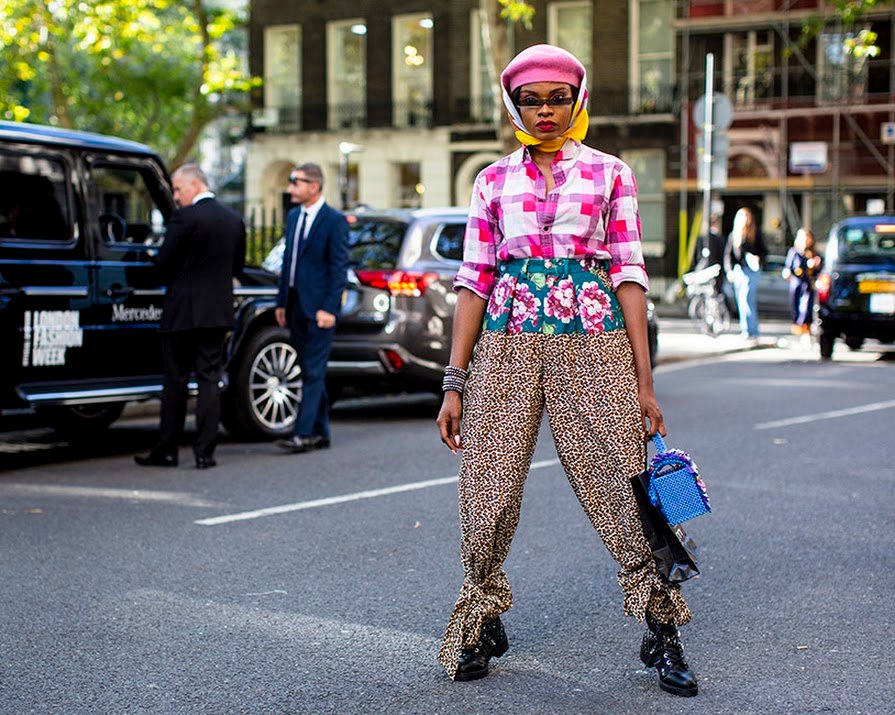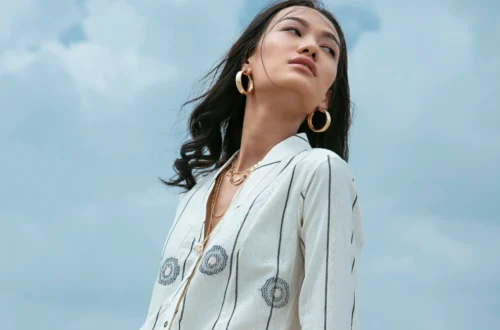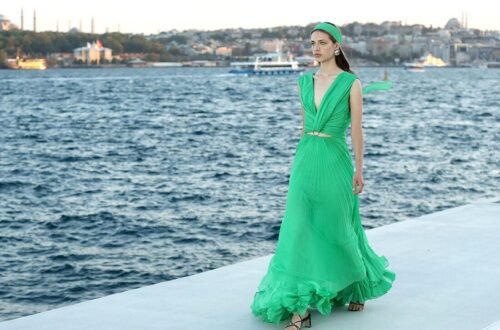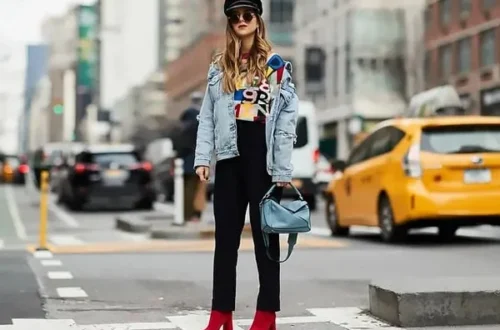Fashion trends are more than just fleeting styles; they’re a cultural pulse, reflecting who we are and where we’re headed. From the chunky sneakers dominating streetwear to the resurgence of Y2K-inspired metallics, trends shape how we express ourselves. This article dives deep into what fashion trends are, why they matter, and how you can navigate them to elevate your style and even your brand’s success. Let’s explore the world of trendy fashion with a mix of insight, personal stories, and practical tips.
What Is a Fashion Trend?
A fashion trend is a specific style, pattern, or aesthetic that gains popularity during a particular time, driven by designers, influencers, and cultural shifts. Think of those viral cargo pants or the sudden obsession with pastel athleisure—trends are born when enough people embrace a look, making it a collective vibe. They’re like the heartbeat of the fashion world, pulsing with creativity and change.
How Trends Are Born
Trends don’t just appear out of thin air; they’re sparked by a mix of cultural, social, and economic factors. Runways set the stage, but social media platforms like Instagram and TikTok amplify them. When I saw my friend post about her new oversized blazer inspired by a Zendaya red carpet look, I knew that style was about to take off.
Types of Fashion Trends
Fashion trends come in different flavors, each with its own lifespan and impact. Understanding these types helps you decide which ones to embrace. For instance, I once jumped on the “cottagecore” bandwagon during the pandemic, only to realize it was a fleeting microtrend.
- Megatrends: Long-lasting shifts like sustainability or minimalism that shape the industry for years.
- Macrotrends: Shorter-term movements, like the 90s revival with baggy jeans and crop tops.
- Microtrends: Quick, niche fads, such as zebra prints or tiny sunglasses, often gone in a season.
Why Trendy Fashion Matters
Trendy fashion isn’t just about looking good—it’s about connection, confidence, and cultural relevance. Following trends can make you feel part of a larger story, like when I wore a bold neon dress to a party and got compliments all night. Trends signal that you’re in tune with the world, and that matters for personal style and business alike.
Cultural and Social Connection
Trends reflect society’s values and moods, from eco-conscious clothing to gender-neutral styles. They let you express solidarity with movements like sustainability. When I switched to thrifted vintage pieces, it wasn’t just stylish—it felt like a small stand for the planet.
Boosting Personal Confidence
Wearing trendy outfits can make you feel like you’re owning the moment. I remember slipping into a pair of high-waisted mom jeans and feeling like a fashion icon, even if I was just grabbing coffee. Trends give you permission to experiment and shine.
Driving Business Success
For brands, trends are a goldmine. Ranking high for trendy keywords like “sustainable summer dresses” can drive organic traffic to e-commerce sites. According to a 2025 study, organic search accounts for 23.6% of e-commerce orders, making trend-driven SEO a must for fashion brands.
How to Spot and Follow Fashion Trends
Staying ahead of trends is like being a detective—you need to know where to look and how to interpret the clues. Whether you’re a fashion enthusiast or a brand manager, spotting trends early can set you apart. My first attempt at trendspotting involved scrolling TikTok for hours, and it paid off when I snagged a pair of platform boots before they sold out everywhere.
Using Trend Forecasting Tools
Trend forecasting platforms like WGSN and Fashion Snoops predict what’s next by analyzing runways, social media, and consumer behavior. These tools are gold for professionals but can be pricey. For a budget-friendly option, I rely on Google Trends to spot rising searches like “boho maxi dresses.”
Leveraging Social Media
Social media is a trend treasure trove. Platforms like Pinterest and Instagram highlight what’s hot, from viral outfits to niche aesthetics. Following influencers like @emrata or brands like Zara on Instagram can give you a front-row seat to emerging styles.
Attending Fashion Events
Fashion weeks in New York, Paris, or Milan are where trends are born. If you can’t attend, livestreams or recaps on Vogue’s website offer a glimpse into what’s coming. I once watched a Paris Fashion Week stream and noticed metallics everywhere—six months later, they were in every store.
Where to Get Trendy Fashion
Finding trendy pieces doesn’t mean breaking the bank. From high-end boutiques to thrift stores, there are endless ways to stay stylish. I learned this the hard way after overspending on a microtrend handbag that was out of style in weeks.
Online Retailers
Websites like ASOS, Revolve, and Net-a-Porter offer curated collections of trendy clothing. They often have filters for “new arrivals” or “trending now,” making it easy to shop the latest looks. ASOS’s “Topshop Edit” is my go-to for affordable yet chic pieces.
Thrift and Vintage Stores
Thrifting is a sustainable way to score unique, trendy items. Stores like Goodwill or online platforms like Depop often have vintage pieces that align with macrotrends like 90s nostalgia. I found a perfect denim jacket at a thrift store that became my signature piece.
Fast Fashion vs. Sustainable Brands
Fast fashion brands like Shein deliver trends quickly but often at an environmental cost. Sustainable brands like Reformation or Everlane offer trendy pieces with a conscience. I’ve learned to mix both—fast fashion for microtrends, sustainable for timeless staples.
| Option | Pros | Cons |
|---|---|---|
| Fast Fashion | Affordable, quick to market | Poor quality, environmental impact |
| Sustainable Brands | Eco-friendly, durable | Higher cost, slower trend adoption |
| Thrift Stores | Unique finds, budget-friendly | Time-consuming, inconsistent stock |
Best Tools for Tracking Fashion Trends
To stay trendy, you need the right tools. Whether you’re a consumer or a brand, these platforms can help you keep up with the fashion world’s fast pace. I’ve used a few of these to plan my wardrobe and even help a friend’s boutique boost its online presence.
Google Trends
This free tool shows what people are searching for, from “chunky sneakers” to “Y2K fashion.” It’s perfect for spotting seasonal trends or regional preferences. I check it monthly to see what’s gaining traction.
WGSN
WGSN is a professional forecasting tool used by brands to predict trends years in advance. It’s pricey but invaluable for businesses. A friend who runs a small label swears by WGSN for planning collections.
Pinterest Trends
Pinterest is a visual goldmine for trendspotting. Its Trends tool highlights popular searches like “fall 2025 outfits.” I’ve used it to create mood boards for my seasonal wardrobe updates.
| Tool | Best For | Cost | Ease of Use |
|---|---|---|---|
| Google Trends | Free trend insights | Free | Easy |
| WGSN | Professional forecasting | Subscription | Moderate |
| Pinterest Trends | Visual inspiration | Free | Very Easy |
Pros and Cons of Following Fashion Trends
Chasing trends can be thrilling, but it’s not without pitfalls. I’ve had my share of trend regrets—like those tiny sunglasses I wore once and never again. Here’s a balanced look at the benefits and drawbacks.
Pros of Following Trends
Following trends keeps you relevant and confident, but it’s not just about vanity. It’s about connecting with culture and expressing yourself.
- Cultural Relevance: Trends tie you to the zeitgeist, like wearing eco-friendly brands to support sustainability.
- Confidence Boost: A trendy outfit can make you feel unstoppable, like my neon dress moment.
- Business Growth: Brands that leverage trends see higher traffic and sales through SEO and social media.
Cons of Following Trends
Trends can be a trap if you’re not strategic. They’re fleeting, and over-investing can leave you with a closet full of regrets.
- Short Lifespan: Microtrends like “Barbiecore” pink can fade fast, wasting money.
- Expense: Keeping up with every trend can strain your wallet, as I learned with that handbag.
- Loss of Individuality: Overfollowing trends can make you blend in rather than stand out.
People Also Ask (PAA) Section
Here are real questions from Google’s “People Also Ask” feature, answered to satisfy your curiosity and search intent.
What is the difference between fashion and trend?
Fashion is the broader, enduring concept of style, while trends are specific, temporary patterns within it. For example, the little black dress is timeless fashion, but neon accents are a trend. Understanding this helps you balance classic and trendy pieces in your wardrobe.
How do fashion trends start?
Trends start through a mix of runways, social media, and cultural shifts. Designers showcase bold looks, influencers amplify them, and consumers adopt them. My friend’s Zendaya-inspired blazer went viral on TikTok, proving how fast trends can spread.
Why are fashion trends important?
Trends connect you to culture, boost confidence, and drive business sales. They reflect society’s values, like the rise of sustainable fashion. For brands, ranking for trend-related keywords can bring in high-converting organic traffic.
Where can I find the latest fashion trends?
Check platforms like Instagram, Pinterest, or Vogue for real-time trend updates. Retailers like ASOS or Zara also highlight what’s hot. I follow @vogue runway for runway recaps that inspire my shopping.
SEO and Trendy Fashion: Why It Matters for Brands
For fashion brands, trendy fashion isn’t just about aesthetics—it’s a business lifeline. Optimizing for trend-related keywords like “fall 2025 fashion trends” can skyrocket organic traffic. According to SEO experts, a well-optimized site can see 30% of its traffic from organic search, translating to higher sales without ad spend.
Optimizing for Google’s EEAT Guidelines
Google’s EEAT (Experience, Expertise, Authoritativeness, Trustworthiness) guidelines are crucial for ranking high. Show your expertise by creating detailed content, like styling guides or trend forecasts. My friend’s boutique blog on “How to Style Oversized Blazers” ranks high because it’s packed with practical tips and real-world examples.
SERP Analysis for Trendy Fashion
A quick SERP analysis for “fashion trends 2025” shows top results from Vogue, WGSN, and fashion blogs. They use long-tail keywords like “sustainable fashion trends 2025” and rich snippets like images and reviews. To compete, your content needs clear titles, structured data, and high-quality visuals.
AdSense Approval and Bulk Site Monetization
For AdSense approval, focus on high-quality, original content that aligns with EEAT. Avoid thin content or keyword stuffing. For bulk site creation, ensure each site has unique, trend-focused content. My friend’s network of niche fashion blogs earns steady AdSense revenue by targeting specific trends like “athleisure outfits.”
FAQ Section
What is a fashion trend?
A fashion trend is a popular style or pattern that gains traction for a specific period, driven by cultural and social influences. Think of low-rise jeans or chunky sneakers. They reflect what’s hot and help you stay relevant.
Why do fashion trends matter?
Trends matter because they connect you to culture, boost confidence, and drive business. For brands, they attract organic traffic and sales. Wearing a trendy outfit can also make you feel like you’re part of the moment.
How can I stay updated on fashion trends?
Follow platforms like Instagram, Pinterest, or Google Trends for real-time updates. Subscribe to newsletters from Vogue or WGSN for expert insights. I check Pinterest weekly to spot emerging styles.
Where can I buy trendy fashion on a budget?
Try thrift stores, Depop, or fast-fashion sites like ASOS. Sustainable brands like Everlane offer affordable, trendy staples. I mix thrifted finds with budget-friendly online purchases to stay stylish.
What are the risks of following fashion trends?
Trends can be expensive and short-lived, leading to wasted money or a loss of personal style. I once bought a microtrend top that was out of style in a month. Balance trends with timeless pieces to avoid this.
Conclusion
Fashion trends are a vibrant reflection of our world, blending creativity, culture, and commerce. They empower us to express ourselves, connect with others, and even drive business success. Whether you’re rocking a bold new look or optimizing your brand for trendy keywords, understanding trends is key to staying relevant. So, dive into the fashion world, experiment with what’s hot, and let your style tell your story. What trend are you excited to try next?





